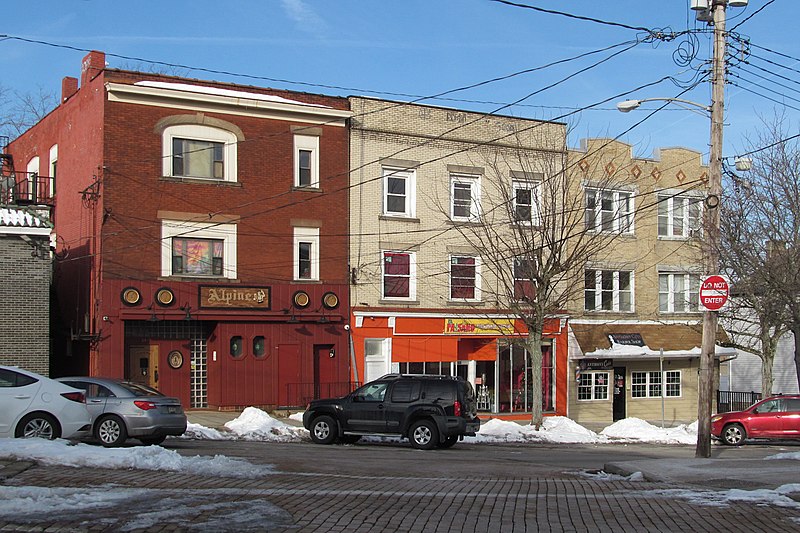
The First Avenue face of the Try Street Terminal (now called Terminal 21 and filled with loft apartments and offices).


The First Avenue face of the Try Street Terminal (now called Terminal 21 and filled with loft apartments and offices).


This niche at the top of the central tower of the Western Theological Seminary seems to require a statue of some saint. Since the building was a Presbyterian seminary, it probably never had one. Perhaps we could fill it with a statue of Harry Thaw, patron saint of wastrel playboy sociopaths.


An inbound Siemens SD-400 trolley stops at the Hampshire stop in Beechview. This is another streetcar picture for Red Line riders to enjoy while we wait for the repairs to the Saw Mill Run viaduct. And, by the way, Las Palmas across the street is an excellent place to find Latin American specialties as well as general American supermarket groceries.

Including parts of One Oxford Centre, the Grant Building, the Jones & Laughlin Headquarters Building, and the Try Street Terminal.

The only active street trackage left in the Pittsburgh streetcar system is on Broadway in Beechview, and on Warrington and Arlington Avenues when the cars are detoured over the top of the hill instead of through the Transit Tunnel. But there are several sections of what we might call semi-street trackage, where the trolleys run in a separate right-of-way either beside or in the middle of the street. Willow Avenue in Castle Shannon is one of them: half the street is reserved for trolleys. Here a Silver Line car crosses Castle Shannon Boulevard.

Every year the cliff behind Banksville Plaza grows a spectacular crop of icicles that merge into a wall of ice.

Beechview is something unique in Pittsburgh and very rare in the United States: an early-twentieth-century streetcar suburb where the streetcars still run down the main street as they did when the neighborhood was first laid out. The central business district has had its ups and downs; right now it is a good place to find interesting little ethnic restaurants and groceries. Most of the neighborhood is laid out as a grid in spite of the precipitous hills, but Broadway, the street with the car line, follows the top of the ridge. Beechview Avenue (below) continues the straight line of the business district as Broadway curves off toward the Fallowfield streetcar viaduct and abruptly ends at Fallowfield Avenue, leaving the streetcars to continue on their own right-of-way.

Following the ancient tradition that the street with the tracks belongs to the streetcar company, the Port Authority is responsible for maintaining Broadway.
Streetcar service in Beechview is interrupted right now because the Saw Mill Run viaduct has been closed for emergency repairs. The Red Line will roll up Broadway again as soon as the bridge reopens.

This picture was taken a little more than a week ago. Beechview now finds itself suddenly without streetcar service. Some shifting was detected in the Saw Mill Run rail and busway viaduct, and Pittsburghers are in a mood to take defects in bridges very seriously. Until the bridge can be repaired, rail service on the Red Line runs only between Overbrook Junction and Potomac, with shuttle buses covering the rest of the route.